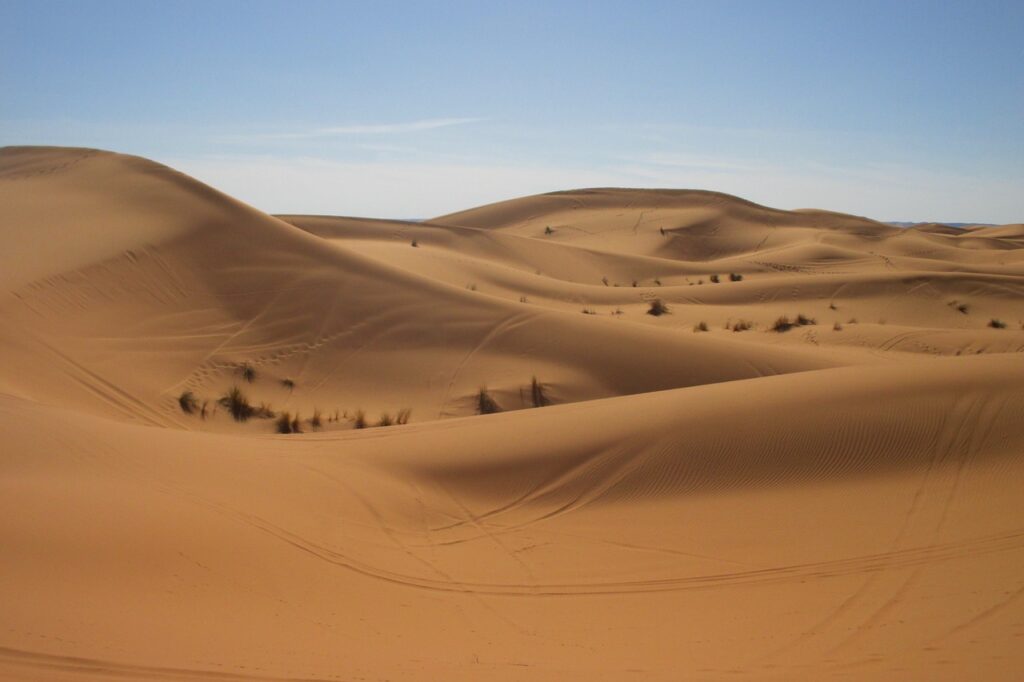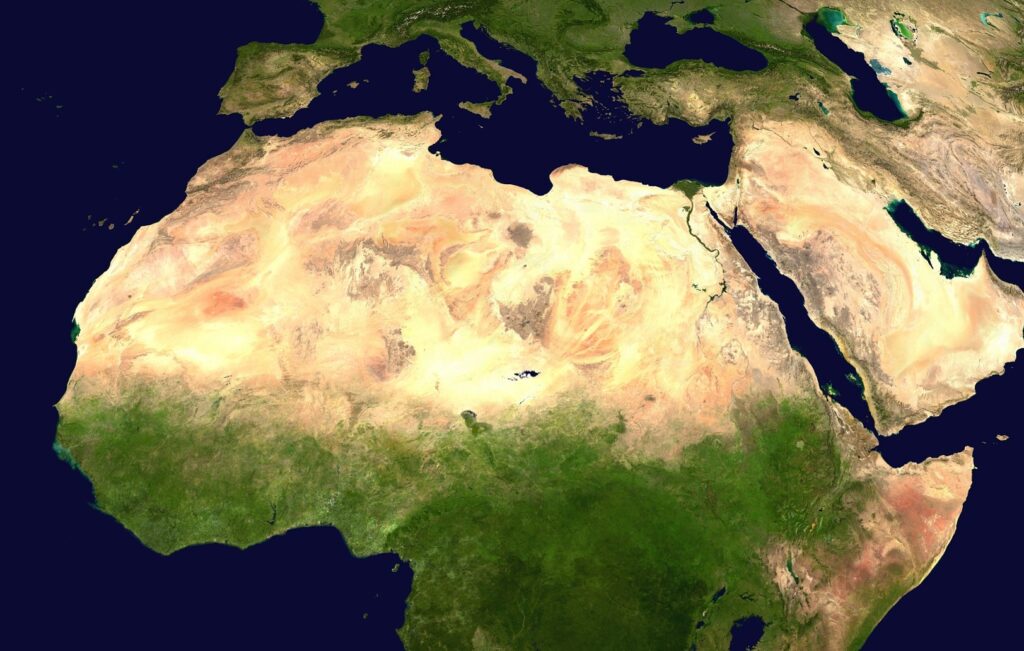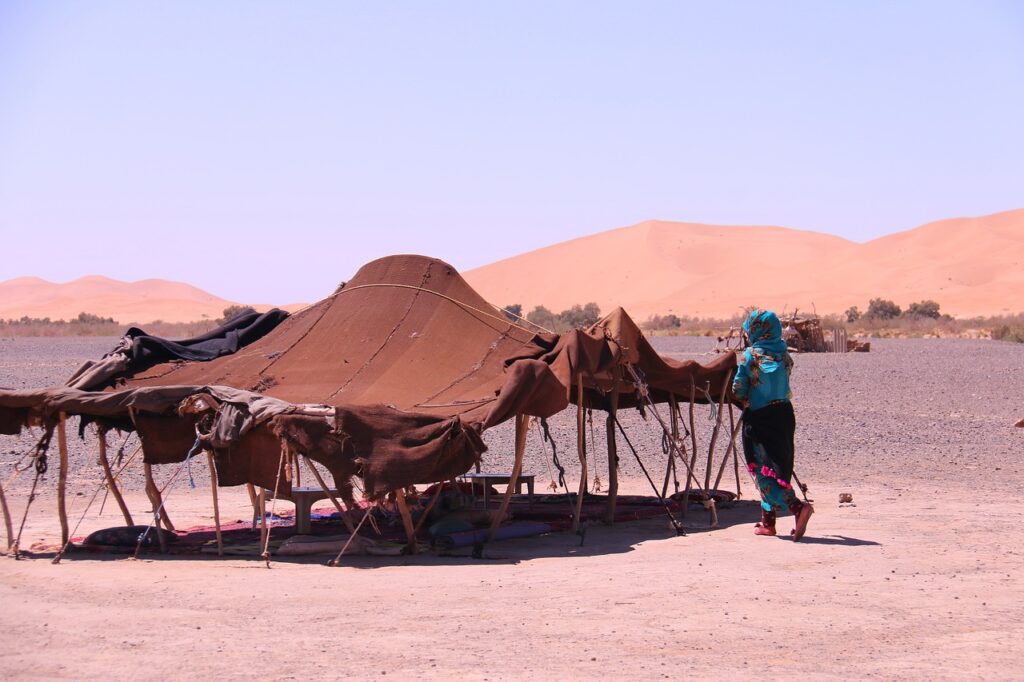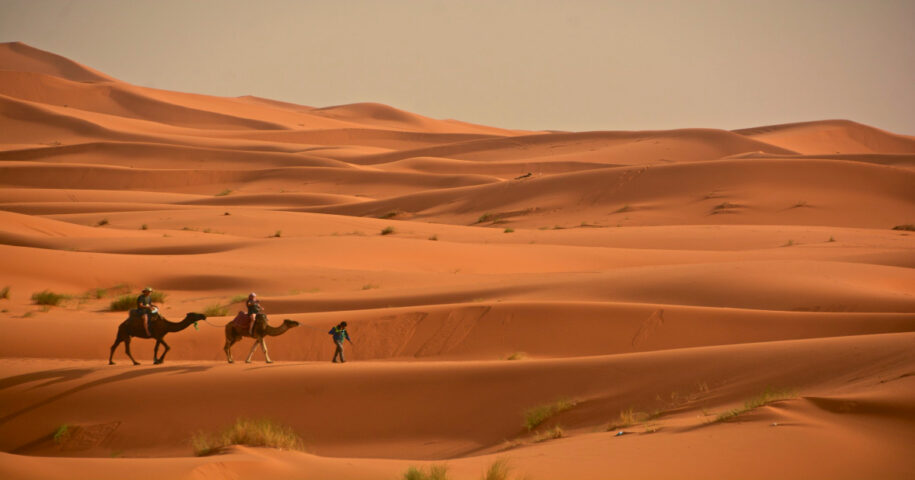The Sahara Desert is more than just a vast and dry area, it is full of interesting things to find. It is crazy to think that this desert used to be green and full of life. Ancient drawings found in the area let us know this. We can see how the weather in the Sahara has changed over many years by looking at them. Even now, the desert is still changing. The plants and animals that live there are responding in wonderful ways.
What Does Sahara Mean?
The history of the word “Sahara” is interesting. The word comes from the Arabic word “Saḥra”, which means “desert.” The Sahara is a big desert, so this makes sense. Ashar is an Arabic word that means “desert-like,” which is linked to the name. Ashar also means a reddish color, which is a great way to describe the vast areas of reddish sand that you can see all over the Sahara.
How Hot Is The Sahara Desert?

With one of the toughest temperatures, the Sahara is the world’s hottest desert. The highest temperature ever measured was 58°C, and the average temperature for the year is 30°C. It does not rain much in this area. In fact, every year less than 1 inch of rain falls in half of the Sahara Desert.
Many people think that the Sahara is always hot, but at night, when there is no humidity, the temperatures drop considerably and can hit as low as -6°C. There is snow all the time in a few mountain areas but nowhere else in the Sahara.
How Big Is The Sahara Desert?

Covering 9.2 million square kilometers, the Sahara Desert is a huge and amazing place, it is as big as China. If you want to explore more of the Sahara, you will see that it is not just a big desert. The wildlife, the weather, and even the scenery in this desert are all very different from one place to another.
The temperature in the Sahara Desert is very different because it stretches out over different countries. There are parts that are very dry and parts that are less dry. Many kinds of plants and animals can survive in this area because it has a variety of weather.
What Can Be Found In The Sahara Desert?
The Sahara Desert is not just sand. Most of it is made up of salt flats, sand dunes, mountains, and dry valleys, as well as empty, rocky plateaus. Only the River Nile flows all year through the Sahara. All the other rivers and streams are seasonal.
It has more than 20 lakes, and most of them are saltwater lakes. Lake Chad is the only lake with fresh water in the Sahara.
Emi Koussi (3,415m), a volcano in the Tibesti Mountains in Chad, is the highest point of the Sahara Desert.
How big are the sand dunes in the Sahara?

Located in the east-central part of Algeria, the Isaouane-n-Tifernine Sand Sea has some of the world’s largest sand dunes, some of which are up to 450 meters high.
Some of the dunes in the Erg Chebbi in Merzouga are as high as 150 meters, making them the biggest in Morocco. They are perfect for outdoor activities such as camel riding, quad biking, and camping at desert camps.
Are you interested in a trip to the Merzouga Desert? Contact us and customize your own itinerary now!
Has The Sahara Desert Changed Over the Years?
Do you want to know how the Sahara Desert has changed through the years? A lot of people think of huge sand dunes that go on forever when they think of the Sahara. This huge area was not always a dry, sandy desert, though. A very long time ago, about 5,000 years ago, the Sahara was full of animals and green plants. The Earth’s tilt moved a little, which caused this big change that we see now.
There is more than just sand in the Sahara Desert now. Rocks and huge sand seas are among the different types of land it has. Scientists think that the Sahara could change again in the future, and it could turn green again. The idea that the Earth’s environment can change a lot over time is very interesting. I wonder what the Sahara will look like in a hundred years.
Do People Live In The Sahara?

Do you ever wonder if people live in the Sahara Desert? Surprisingly, about two million people call this vast desert their home. They have adapted incredibly well to the harsh living conditions. Many of them live a nomadic life, moving around with the seasons to find water and food for their animals.
In the Sahara, communities are small and everywhere because the desert is so big. People who decide to stay in one place usually live near important water sources. Living in the Sahara requires lots of patience and intelligence. For example, the way they build their homes and their community traditions help them survive in such a challenging environment.


Leave a Reply